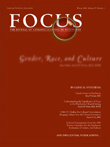Clinical Features and Treatment of Body Dysmorphic Disorder
Abstract
Clinical context
A patient with BDD
Clinical features of BDD
Obsessional preoccupation with perceived appearance “defects”
Repetitive and safety behaviors
Functioning, quality of life, and suicidality
Comorbidity
Prevalence
Recognizing and diagnosing BDD
Treatment strategies and evidence
Establishing an alliance and providing psychoeducation
Surgery and nonpsychiatric medical treatment
Pharmacotherapy
SRIs are the medication of choice for BDD, including delusional BDD
Relatively high SRI doses are often needed
SRI augmentation strategies
Cognitive behavior therapy
Conclusion
| A. | Preoccupation with an imagined defect in appearance. If a slight physical anomaly is present, the person’s concern is markedly excessive. |
| B. | The preoccupation causes clinically significant distress or impairment in social, occupational, or other important areas of functioning. |
| C. | The preoccupation is not better accounted for by another mental disorder (e.g., dissatisfaction with body shape and size in anorexia nervosa). |
| 1. | Are you very worried about your appearance in any way? |
| Or: Are you unhappy with how you look? | |
| If yes: What is your concern? | |
| 2. | Does this concern preoccupy you? That is, do you think about it a lot and wish you could worry about it less? If you add up all the time you spend each day thinking about your appearance, how much time would you estimate you spend? |
| 3. | What effect has this preoccupation with your appearance had on your life? Has it: • Significantly interfered with your social life, dating/marriage, schoolwork, job, other activities, or other aspects of your life? • Caused you a lot of distress? • Affected your family or friends? |
BDD is diagnosed in patients who are 1) concerned about a minimal or nonexistent appearance flaw, 2) preoccupied with the “flaw” (e.g., they think about it for a total of at least an hour a day), and 3) experience clinically significant distress or impairment in functioning as a result of their concern.
Source: Adapted from Phillips KA: The Broken Mirror: Understanding and Treating Body Dysmorphic Disorder. New York, Oxford University Press, 1996
Footnotes
References
Information & Authors
Information
Published In
History
Authors
Metrics & Citations
Metrics
Citations
Export Citations
If you have the appropriate software installed, you can download article citation data to the citation manager of your choice. Simply select your manager software from the list below and click Download.
For more information or tips please see 'Downloading to a citation manager' in the Help menu.
View Options
View options
PDF/EPUB
View PDF/EPUBGet Access
Login options
Already a subscriber? Access your subscription through your login credentials or your institution for full access to this article.
Personal login Institutional Login Open Athens loginNot a subscriber?
PsychiatryOnline subscription options offer access to the DSM-5-TR® library, books, journals, CME, and patient resources. This all-in-one virtual library provides psychiatrists and mental health professionals with key resources for diagnosis, treatment, research, and professional development.
Need more help? PsychiatryOnline Customer Service may be reached by emailing [email protected] or by calling 800-368-5777 (in the U.S.) or 703-907-7322 (outside the U.S.).

